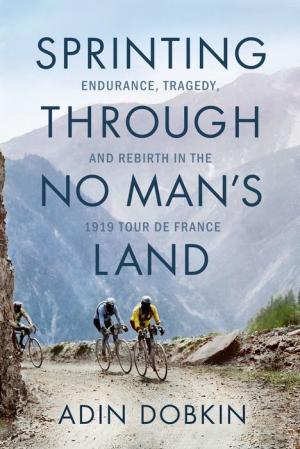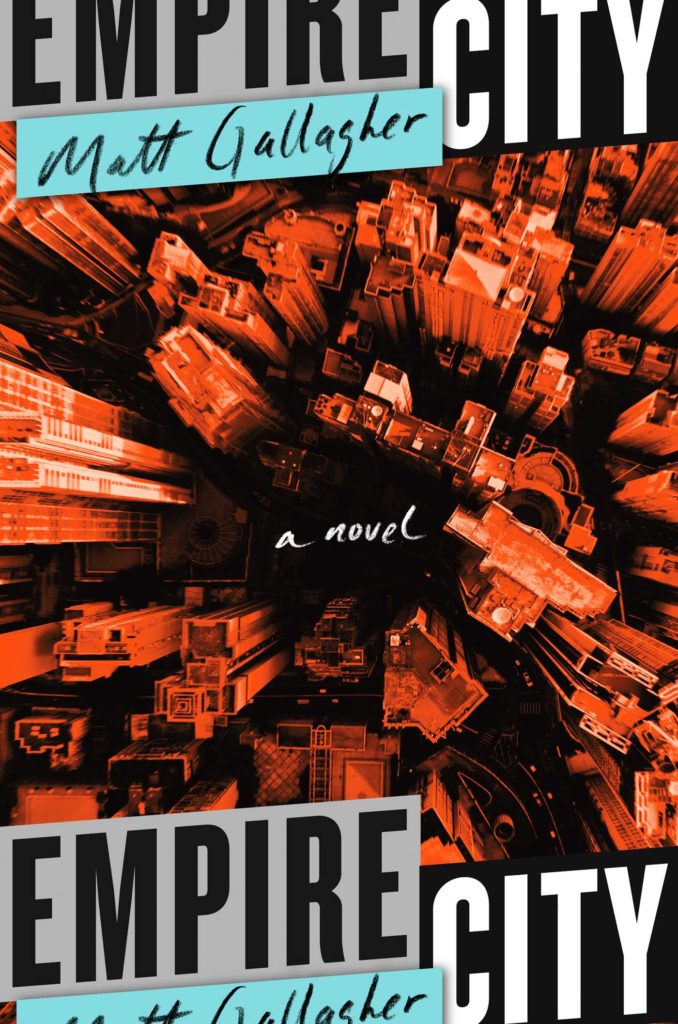New Review from Matthew Komatsu: Adin Dobkin’s ‘Sprinting Through No-Man’s Land’
I cannot separate my early memories of war from those of cycling. I’d just begun to cycle competitively — as a lieutenant and duathlete stationed in San Antonio — when I deployed to Afghanistan in the summer of 2002. And in the short several months I was stateside before deploying to Iraq 2003-2004, I spent much of my time in the saddle. In fact, I was run over by a San Antonio driver and violently ejected from my bike the week before I boarded my plane to Iraq. On the flip side of Iraq, I put in over 200 miles a week on the bike. As much as ten hours a week, post-war, often spent alone and silent. That’s a lot of time to think.
*
I thought a lot about those days as I followed Adin Dobkin’s nonfiction narrative along the 1919 Tour de France in his debut Sprinting Through No Man’s Land. It was hard not fill the minds of the cyclists, many of whom fought in WWI, with thoughts of my own. But while I the cyclists of Sprinting Through No Man’s Land spent close to half the race along a course that was altered because towns that had once been stage starts or finishes either no longer existed, or were so devastated that they could not support the logistical needs of the race and its competitors.
The book begins, fittingly, in Paris in the Fall of 1918, mere days after the end of WWI. At the desk of Henri Desgrange, the editor of the sporting newspaper l’Auto and founder of the Tour de France, we witness his decision to resume the Tour de France even as Armistice celebrations are erupting in the streets. From there, we’re off to the races, if you’ll forgive the turn of phrase, following a cast of characters as the Tour makes its way around the periphery of France.
To call Adin’s cast “colorful” falls short. There’s Desgrange — positioned as a kind of rigid omnipotent. The ll-seeing, all-knowing, and ultimately all-powerful race director and mouthpiece of the race through l’Auto.. The racers: brothers Henri and Francis Pelissier, both veterans of WWI. The former, an underdog by his age; the latter, the younger brother still in his elder brother’s shadow. Eugene Cristophe, older than even Henri Pelissier. French veteran. Firmin Lambot, the Belgian who weathered WWI under German occupation. And others, of course.
The research that went into the writing of this book is exhaustive, and Adin takes great pains to show the reader the sourcing and methodology he used to develop the writing itself. He does a marvelous job of world-building, layering context in a chaptered structure that roughly matches the 15 stages (and gobsmacking 6,500km/4,000 miles covered during the 1919 Tour). He even went the extra mile, including three interesting vignettes regarding under-represented narratives that are connected geographically with where the reader is in the race at the time. In other words, I learned a great deal about WWI-era France.
Which leads me to my only quibble with the book, which has more to do with the baggage I brought to the reading than Adin’s intentions for the book: this isn’t your average armchair sports enthusiast paperback. Those books are predictable: event-driven, illustrated by flashes of character background, and largely high-velocity pacing. Sprinting Through No Man’s Land is a careful book, slow and methodical, that takes great pains (as alluded to in Adin’s afterword in which he addresses the pitfalls of narrative building) to paint as full an understanding of the race as possible. In Adin’s world, it would appear he’s more concerned with telling the story of a time, than of a particular race and its characters. To do so, he spends a great deal of time providing the reader the story of the land in order for us to experience the race. So, don’t come expecting chaptered race standings and attrition lists (the number of racers who quit before the race’s end is breathtaking) because that’s not Adin’s story. And that’s just fine because it’s impossible to separate the 1919 Tour from WWI. The landscape, the racers, the people: WWI had changed everything. Countryside towns along the front had been reduced to rubble and roads thrashed by the years worth of passage of men and machine. Three previous victors had died in WWI. And the people themselves had been traumatized by the wartime experience, many of them displaced and grieving. So really, Adin’s book is as complete a story of that time as he could make it.
As a former competitive cyclist, I found Adin’s technical details refreshing. The Tour of today inherited the spirit of those Tours — the grueling distances, staged structure, and general classification scoring methodology and accompanying yellow jersey primary among them — but I doubt Desgrange or the Pelissier brothers, if popped into a time machine to see what their race would become in a century’s time, would find much in common with today’s Tour. Unlike today’s professional cycling team structure, the teams then rallied under similar kinds of corporate banners, and remained amateur in nature. The teams of today serve to protect one most talented member of the team and his chances of winning the overall race. Domestiques — typically junior members — sole purpose in life is to create advantages for their captain, often find themselves breaking the headwinds for their captain, fetching water bottles and sustenance from the team’s chase vehicle, and even giving up their bicycle should the captain’s fail. In 1919, each rider was an island in Desgrange’s amateur storm. If your bike broke, you had to stop and fix it yourself in, say, a local blacksmith shop. And I do mean yourself. No spoilers, but there’s a nail-biter of a scene in a late chapter that will have you counting seconds as a rider repairs his bike fork while the blacksmith simply observes. If a rider fell behind, other riders on his team were forbidden from falling back and pulling him forward lest they all risk time penalties from the ever-present eyes of Desgrange’s armada of l’Auto journalists/race observers. Today’s bicycles are technological marvels to the point that several years ago, professional cycling implemented minimum bicycle weights, and specified wheel types and bike frame geometries to reduce aerodynamic advantages. The bikes you see in the Tour today are a far cry from what Adin exposes us to: thick-tubed steel framed bikes with one-gear wheels that required a racer to dismount and manually change out to change gears. They were tanks to today’s sports cars. And the clothing — my god — ask yourself how you’d feel about cycling 4,000 miles in wool, minus the luxury of padding under your ass.
*
Sprinting Through No Man’s Land is a triumph of nonfiction storytelling, and it will be a welcome addition for the bookshelves of cycling fans and war literature aficionados alike (I’m both if you can’t tell). Every page is a delight, unified by Adin’s excellent prose and editorial choices, from the exit from and return to Paris, and it brought me back to my own post-war cycling in ways unexpected and refreshing. My recommendation: turn on this year’s Tour. Read a chapter at the end of every stage, and let Adin build that world for you in ways that simply watching it never could.
Allez!
*
Dobkin, Adin. Sprinting Through No-Man’s Land: Endurance, Tragedy, and Rebirth in the 1919 Tour de France.

